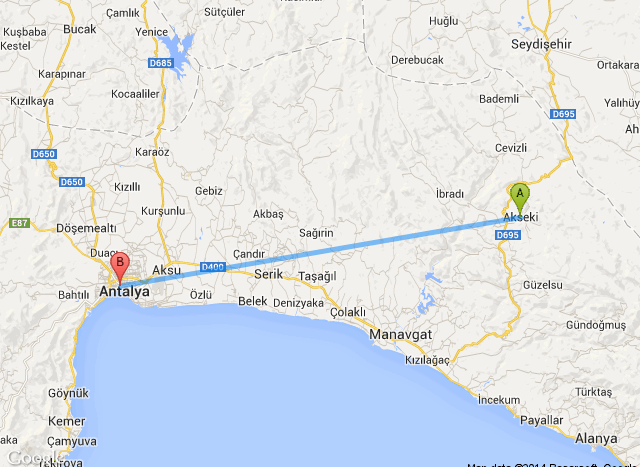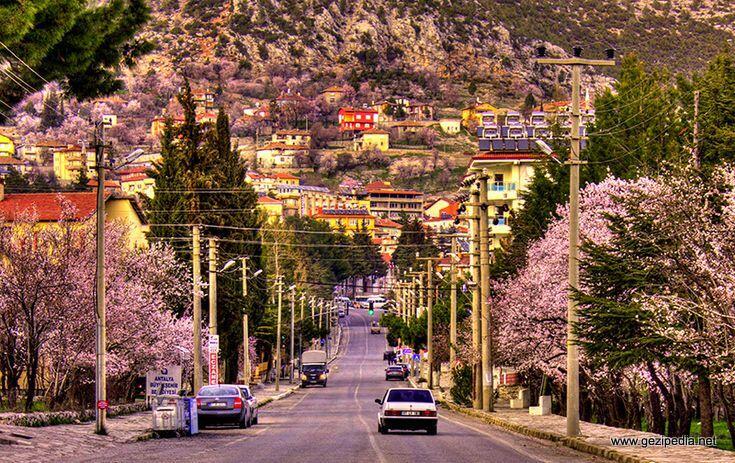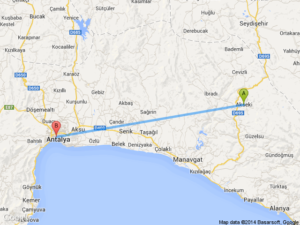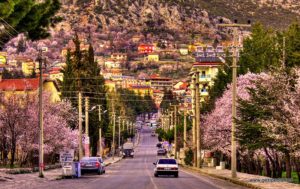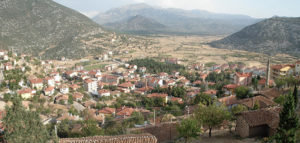Antalya Akseki District
If you want to know the villages and other areas in Antalya, we recommend you to read this article.
Akseki is a district in the north of Antalya. Akseki’s old name was Marla. Geographically, Akseki is located in the east of the Manavgat River, south of the Konya Plain. People living in the villages of Manavgat district, in the summer go to the plateau Akseki. Passing the old Silk Road as a continuation of Alanya was effective in the development of the city and a high culture of life.
It has an earthquake-resistant architectural structure characteristic of this region. The nearby İbradı area is one of the places to visit. Tours to this region are usually organized with İbradı. Since the distance between them is not so great, they constantly interact. Due to its very natural structure and tranquility, residents of Manavgat and tourists coming to Manavgat especially visit it. Add to this the fact that the air is not too humid and lasts only 30 minutes from Manavgat.
Akseki, which was founded in the high foothills of the Taurus Mountains, received another impetus in tourism with the restoration of old historic houses and religious works that were recently destroyed. Especially under the direction of ÇEKÜL (fund for the protection and promotion of environmental and cultural values), it is revitalized and brought to tourism. Small boutique hotels open, and those who had previously migrated from Akseka began to return again. Near the center of the villages of Akseki, Sarykhachilar, Buchaklivat and Belenilvat are successful examples of updating not only in Akseki, but also in Anatolia.
Хотите узнать поподробнее про турецкое гражданство?
Akseki ECONOMY
The basis for the existence of people living in Akseki is forestry, trade and livestock. In addition to this, viticulture and almond growing is also carried out throughout the region. Despite the fact that you can grow vegetables and fruits. However, this agricultural activity does not occupy much space in the economy of Akseki. This creates a lot of activity in the cultivation of basic products. The most important of these are grapes and figs. Trade and breeding are trade assets. In Akseksky district honey, butter, cheese, onions, forest, game and domestic animals occupy a very important place. Most of these products are exported. In addition, the Akseki area is highly developed in weaving. There are currently no large industrial enterprises in Akseki.
Especially after World War II, people began to migrate due to the inability to keep up with industrialization, which developed due to geographical difficulties in science. Although many cooperatives, such as weaving and development cooperatives, were created to prevent this migration, this migration was not significantly prevented. Currently, about 400 thousand inhabitants of Akseka live in different regions of the country.
Recently, the export of snowdrop bulbs has brought economic benefits in the region.
Snowdrop bulbs are used in the pharmaceutical industry. The number of mushrooms grown is growing, and composting opportunities are being created. Again, picking and selling mushrooms is a new trading gate. In addition to this, bay leaf, thyme and oregano oil are used in the packaging of figs.
The mountainous structure of Akseki and rocky terrain prevent them from being very successful in agriculture. In particular, many goods were brought from outside the city to Akseki. Some of the larger villages carry grapes. Murtici grapes are especially famous.
There are few cattle breeding in the Akseki area. The main reason for this is that the land is mountainous. Despite this, sheep and goat husbandry are very developed. The trade in cheese and manure is very developed. Tulum cheese is very famous. Despite the fact that poultry was tested in Akseksky district, this lesson was not very successful. Beekeeping is one of the most important livelihoods.
Akseki is the most important place in Antalya for hunting tourism. Mountain goat hunting is especially famous in the Gidengelmez mountains. In addition, caper and thyme cultivation has recently developed. Although agriculture is developing, it is not enough for the economy. For this reason, manual work is also very common. A shoe workshop, brazier, ceramics and wood carvings are very common. Especially in the city of Bademli, the manufacture of wooden spoons and wood carvings are very common. Almost every house has a small workshop.
EDUCATION IN Akseki
Education is very important for axeki. They believe that they need education in order to lead a more comfortable life. Even during the Ottoman Empire, there were many different schools. Elementary, secondary and university schools were then in Akseki. The people of Akseka lowered their educational level in the late Ottoman period. Akseki people sent their children to various schools in the surrounding area to provide them with a good education. Throughout history, many important political, scientific, and commercial people have appeared.
Since the creation of the republic and the power of the state were insignificant, people carried out their own education. Given that the period was very difficult, the people of Akseka showed great devotion and opened new schools. They gave their children a better education.
Almost all Akseki villages have cultural and solidarity associations, and they organize festivals that highlight the characteristics of their villages.
Revolutionary elementary school was built by Axekiler instead of a battered elementary school
The Egen Mehmet Pasha library, built in 1723, serves a modern building with conference rooms, more than 25 thousand books and more than 320 unique manuscripts in the world. In addition, educational and training services are provided by secondary vocational health schools, Anadolu senior vocational schools, Paras high schools, super schools, Shahinler high schools, Imam Khatip high schools, high vocational schools and Cevizli (Multiprogram High School) . In addition, Akseki, Turkey’s third largest Ataturk statue.
Akseki schools, which are known as districts with their own schools, are an exemplary educational and sports center with its own library, stadium, indoor gymnasium, swimming pools and carpeted floors. Akseki is the area with the most martyrs and war veterans in Gallipoli. The records associated with them are kept in the library of Yegen Mehmet Pasha.
Хотите посмотреть наше “горячее” предложение?
GEOGRAPHY, CLIMATE AND TRANSPORT
Akseki was founded in the southern part of our country, in the western part of the Mediterranean, on the historic Silk Road of Alanya-Konya, near the sea of the Taurus Mountains. It consists of 41 villages and 6 districts. This is the oldest region after Alanya in terms of population, rare in terms of population. Its area is 2500 km2, and the population is more than 14 thousand people.
The Akseksky district separated the villages of Gundogmush and Ibrady from themselves. Since 1879, municipal services have been provided in the district. It adjoins Bozkir in the east of Akseka, Seydishehir and Beysehir in the north, Gundogmush in the south and Manavgat and Ibrada in the west. After the lakes Beysehir and Sugla in the lake region, it was founded in a mountainous region with the borders of a wooded region.
130 km from Antalya is an area surrounded by the Taurus Mountains. Its height is more than 1000 meters. Spread over an area of 2537 square kilometers, the central population of Akseki is about 3,500. This number totals 14 thousand, along with villages. The population of Akseki, in which 41 villages live, has a population of 10 people per square kilometer. The main vegetation of Akseka is makvah and pine trees. However, they are not on the high plateaus of Akseka; only small thickets of grass and thorns. In the village of Guzelsu Akseki there are cedar (resin) trees, which in the world were taken under protection and attracted many civilizations in this region in the history of Akseka. Some of these trees are huge and over 500 years old.
LAND STRUCTURE
The Akseki region, which is fully part of the Manavgat River Basin, has very hilly and mountainous terrain. There is no significant plain. The structure of the earth is divided into three parts. 1-Mountain villages, 2-In the village, 3-Gembos-Einif. The northern villages of Akseki also have various terrain structures.
WATER RESOURCES
Besides the lack of soil in the region, the most important problem is the lack of water. The structure of the crater absorbs rain and snow water as it is. There are no sources of water in the area between the Alak site and the Yildiz mountains, starting near the Manavgat valley. This is because the crater is so thick that the water is too deep.
The strongest water in the region manifests itself in the form of strong sources off the banks of the Manavgat River. From north to south: the Desirmenlik spring in Desirmenlik, the Khersey spring within the borders of Suleimaniya, the Dudenbashi spring in Kuyukak, the Alihok spring in Gyumyushdaml, the Yedipynar spring on the Göden coast, the Olukshanagi spring in Sozahodzin in the Kozojasin island of Kozojosin in the island of Kozojosin.
CLIMATE
The Manavgat River is descending perpendicularly marine with a marine impact from the side. Several Mediterranean shrubs planted per day Üzümdere, which is located 50-60 km from the sea. Despite its height of 1050, it grows to a height of 1200 garnets, figs and hitlembik. Between this tip and the valley of the Manavgat River towards Murtichi, the Mediterranean heat manifests itself in the following villages.
Winter is hard in the region. However, even if there is a lot of snow. In addition, the summer is hotter here. Sometimes even drought occurs. In recent years, rainfall has declined significantly in the summer. In the center of Akseka, the temperature is 20-35 degrees in the summer and 15-20 degrees in the spring.
TRANSPORT
It is 155 km from Antalya. The Antalya-Akseki-Seydishehir-Konya Highway is the shortest route connecting Central Anatolia with the Mediterranean Sea. In addition, the Antalya-Akseki-Beysehir-Konya highway, which was built in the early years of the republic and was the only road connecting Central Anatolia with the Mediterranean Sea, continues to serve today. The distance between Akseki and Konya is 160 km. Akseki, located at an altitude of 1050 meters in the mountains of the Western Taurus, is located on the 67th kilometer of the Antalya-Konya highway, which was commissioned from the 88th kilometer of the Antalya-Mersin highway.
In addition, the Suleymaniye-Seydisekhir, Alakabel-Bozkir and Akseki-Ibradi roads provide transportation to nearby areas.




